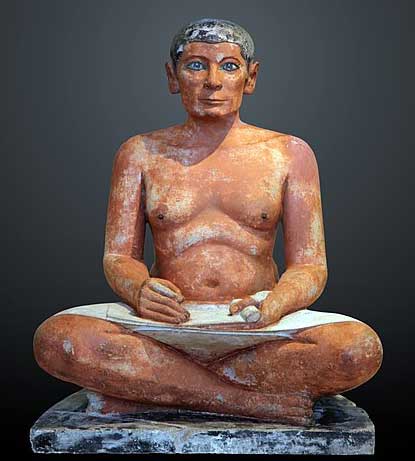Kōetsu Utaibon 光悦謡本 [Saga, Kyoto, 1607].
The 100 Noh libretti called "Koetsu-bon" represent an astonishing leap, something unprecedented in the history of the illustrated or decorated book: this was the first time a book had been conceived as a single unified work of art. 1/


The 100 Noh libretti called "Koetsu-bon" represent an astonishing leap, something unprecedented in the history of the illustrated or decorated book: this was the first time a book had been conceived as a single unified work of art. 1/



Not until William Blake’s books two centuries later, do we encounter anything like this as a "Gesamtkunstwerk" in the West, and the creation on any sort of scale of books composed as integrated, decorated printed works of art.... 2/ 

.... did not arrive in the West until the private presses of the late 19th century Arts & Crafts movement in Britain, and the French livres d’artistes produced in Belle Epoque Paris in the late 19th and early 20th centuries. 3/ 

These are all part of a series of libretti with the chants for a hundred Noh plays, produced around 1607 at the private press in Saga, north of Kyoto. They were printed for the wealthy merchant Suminokura Soan (1571-1632), in collaboration with his calligraphy teacher Koetsu. 4/ 

Hon’Ami Koetsu (1558-1637) was an extraordinary cultural figure, famous in his lifetime - and revered to this day in Japan - as an artist, calligrapher, lacquerware maker, potter and connoisseur. He founded the Rinpa school of painting. 5/ 

Issued in very limited numbers, these books were never sold in the normal way - they were intended for private distribution only to an elite audience: friends and acquaintances of the creators who formed the patrons of the Saga artistic community. 6/ 

The Koetsu Utaibon were produced in three levels of luxury. The very finest, known as known as Koetsu Utaibon Tokuseibon, had mica patterns underprinted on the text leaves and cover sheets before the movable type text was added. This is an example of one. 7/ 





The next level also has mica-printed covers but employed papers of different colors (usually some combination of cream, pale blue, pale pink, pale green & pale yellow) for the text leaves. The least luxurious version used only cream-colored text paper with mica on the covers. 8/ 



The movable type characters are based on Koetsu's calligraphy; this type is called hiragana majiri, a combination of kanji and kana accompanied by dashes next to each syllable. These dashes are the notations for the pitches to be sung. 9/ 

The notes are not written as specifically as they are in Western sheet music. If the dash goes up, the pitch is raised; if it is straight, the same pitch is continued; and if it goes down, the pitch is lowered. 10/ 

Decoration apart, these Noh chant booklets are remarkable in other ways. An unusually thick and opaque kind of "gampi" paper was used, made specially for these editions, and, contrary to normal Japanese practice, it was printed on both sides of the sheet. 11/ 

The bindings are unique and unusual too. The outer covers, though printed first as a single sheet with a mica-printed design, were cut in two and each given a folded turnover along one edge, in which one batch of the folded sheets was lodged. 12/ 

The two halves were then sewn together through the turn-overs of the two halves of the cover, brought together at the inner edge. This is a binding method unique to Japan and is known as Yamato-toji [or retchoso]. 13/ 

The one hundred Kōetsu Utaibon are extraordinary works of art, centuries before their time, and amongst the most remarkable books ever created in Japan - or anywhere else. 14/ 







• • •
Missing some Tweet in this thread? You can try to
force a refresh


















